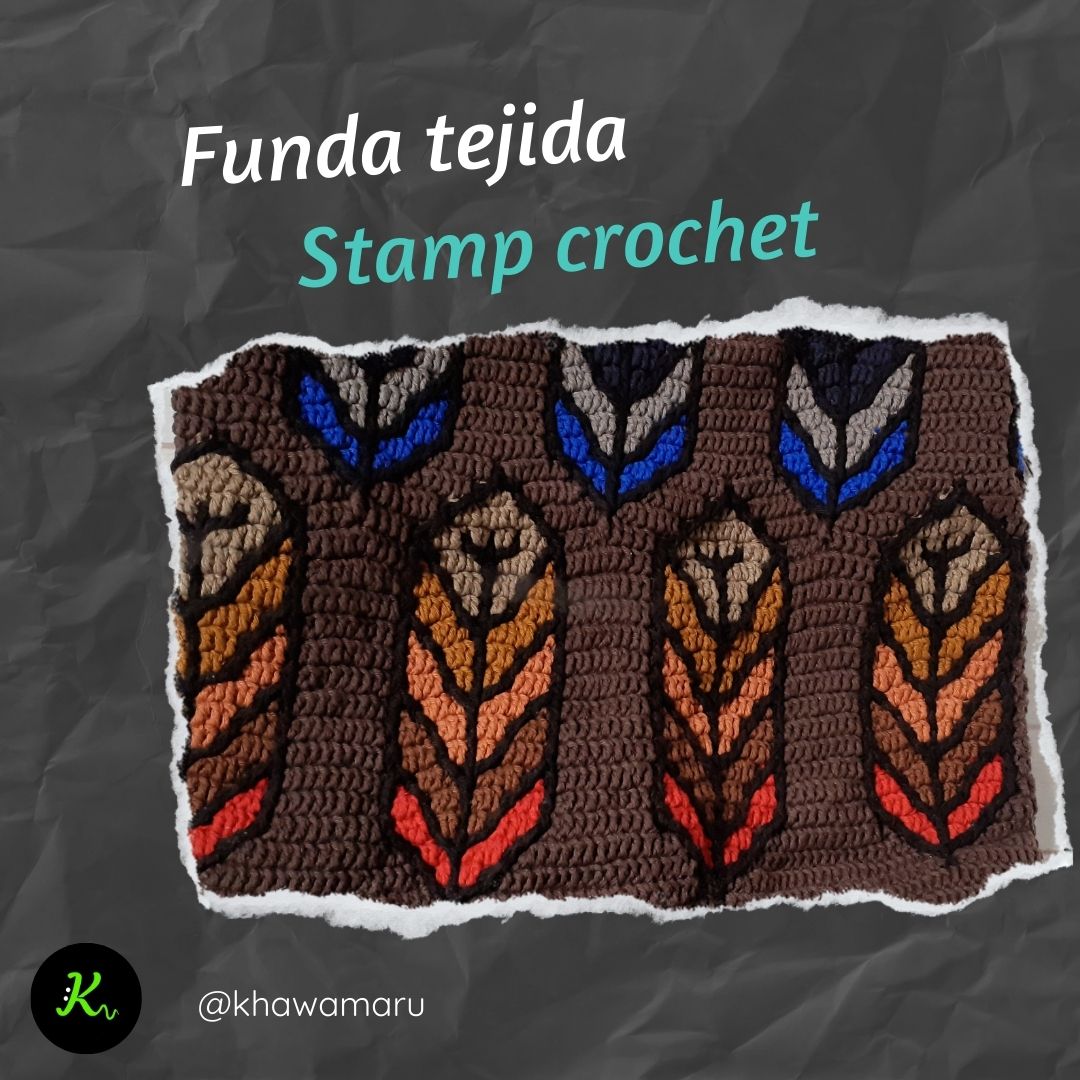
¡Hola, espero te encuentres de maravilla!
Hi, I hope you are feeling great!
Aquí me encuentro terminando mis labores pendientes, en diseño (personajes en espera), tejido (patrones por tejer) y nuevas técnicas (Stamp crochet y tejidos con hilo nylon y otros hilos distintos al 100% algodón).
Justo esta funda fue un proyecto que me trajo muchas enseñanzas. Luego de la publicación anterior, tejí y destejí 2 veces más. Al final lo tejí a doble hebra y con un crochet de 3 mm para darle mayor rigidéz a la funda.
Here I am finishing my pending works, in design (characters in waiting), crocheting (patterns to be crocheted) and new techniques (Stamp crochet and crocheting with nylon yarn and other yarns different from 100% cotton).
Just this cover was a project that brought me many lessons. After the previous publication, I crocheted and uncrocheted 2 more times. At the end I crocheted it in double strand and with a 3 mm crochet to give more rigidity to the cover.
¡Hamuy!
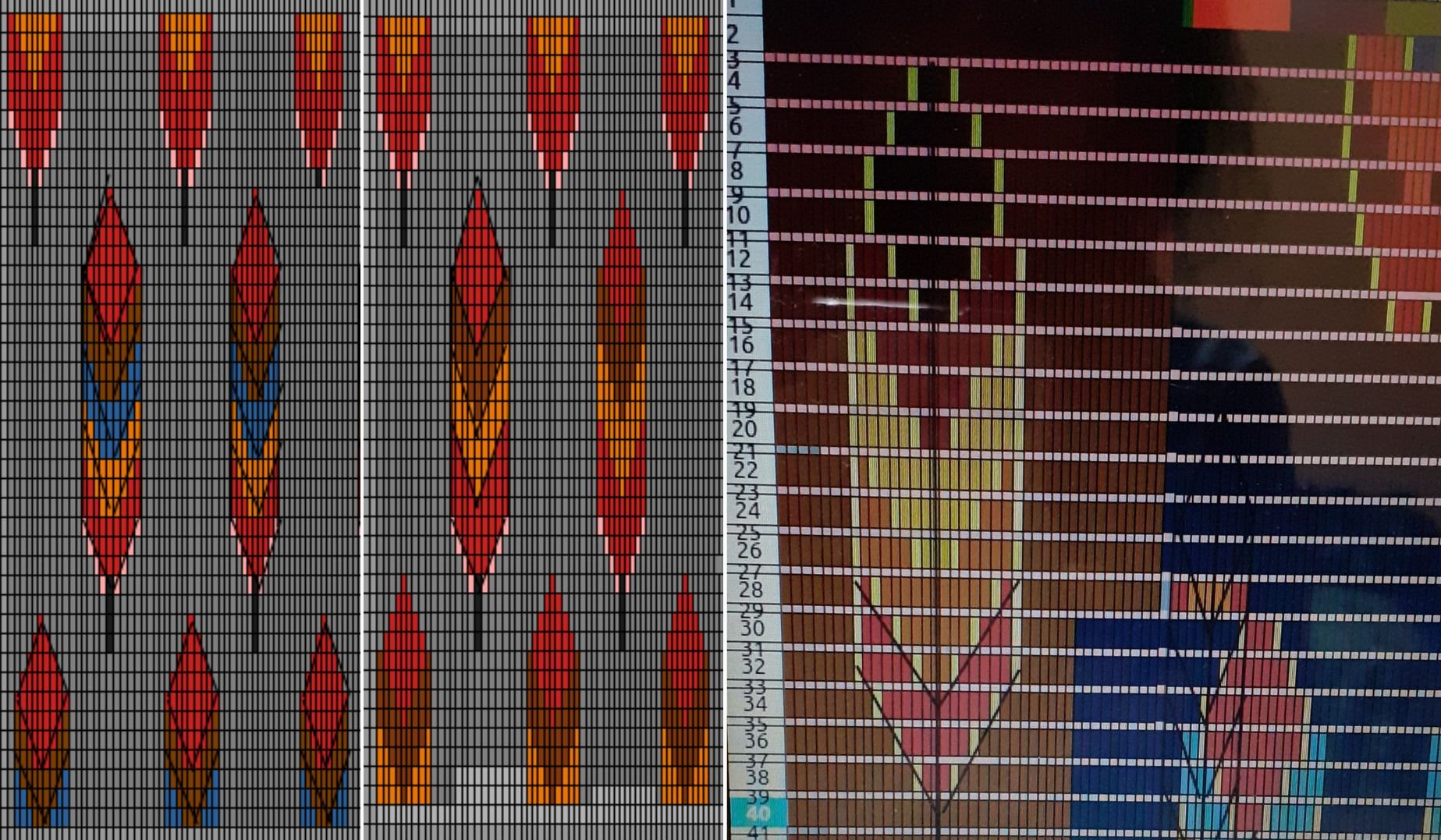
Antes de tejer en "Stamp crochet" tienes que elegir el diseño a estampar. En este caso diseñé estas plumas: enteras y mitades (superior e inferior). Los colores pedidos fueron: rojo, azul y marrón. Luego le agregué colores que combinen muy bien. Una pausa aquí...Hacer un boceto te da una idea de lo que quieres trabajar, la realidad es que los hilos son similares, mas no iguales en coloración al boceto.
Before crocheting in ‘Stamp crochet’ you have to choose the design to print. In this case I designed these feathers: whole and halves (top and bottom). The requested colors were: red, blue and brown. Then I added colors that match very well. Stop... Making a sketch gives you an idea of what you want to work with, the reality is that the yarns are similar, but not the same in coloring as the sketch.
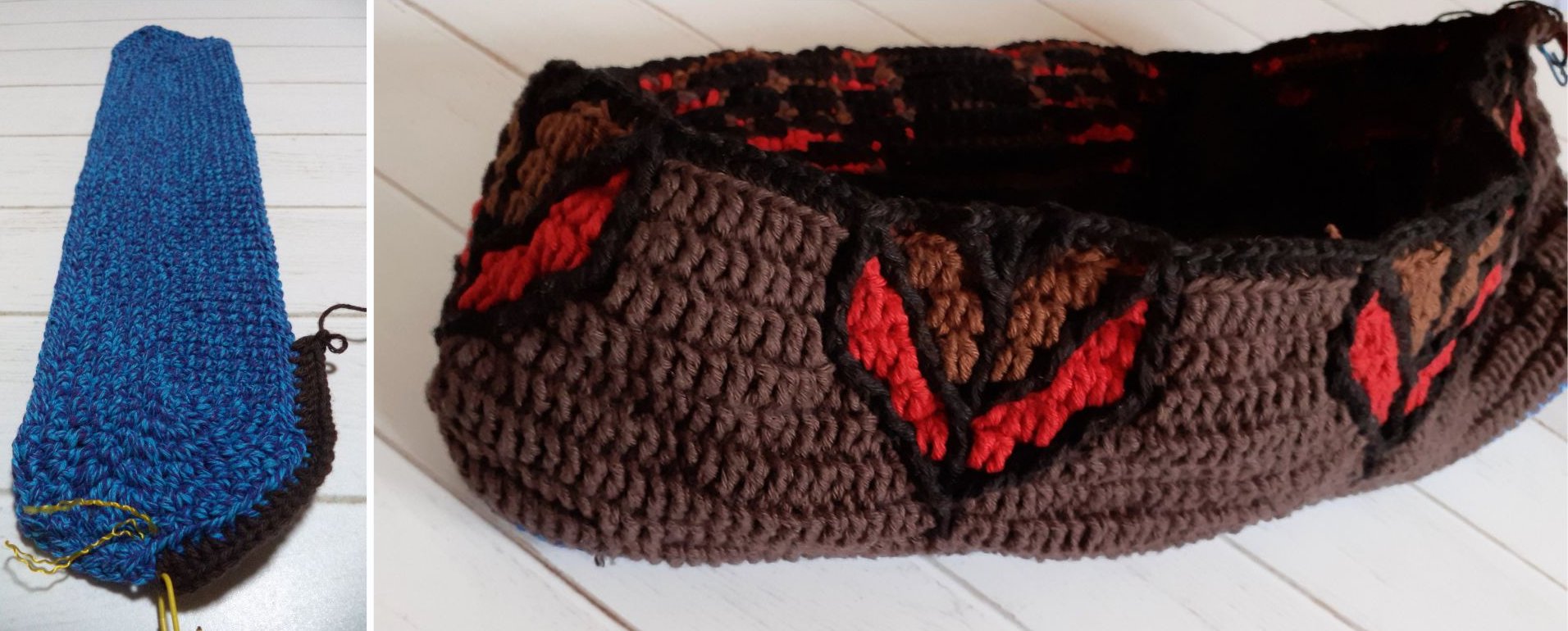
Cuando tejia nuevamente, iniciaba desde la base. La particularidad de esta técnica (Stamp crochet) es que tienes que tener bien claro lo siguiente:
- Número de puntos totales
- número de figuras (plumas)
- número de puntos del ancho de cada pluma
- número de espacios entre plumas
Y asegurarte que esos datos tengan relación con los puntos totales de la base.
When I crocheted again, I started from the base. The particularity of this technique (Stamp crochet) is that you have to be very clear about the following:
- Number of total points
- number of figures (feathers)
- number of stitches in the width of each feather
- number of spaces between feathers
And make sure that these data relate to the total points of the base.
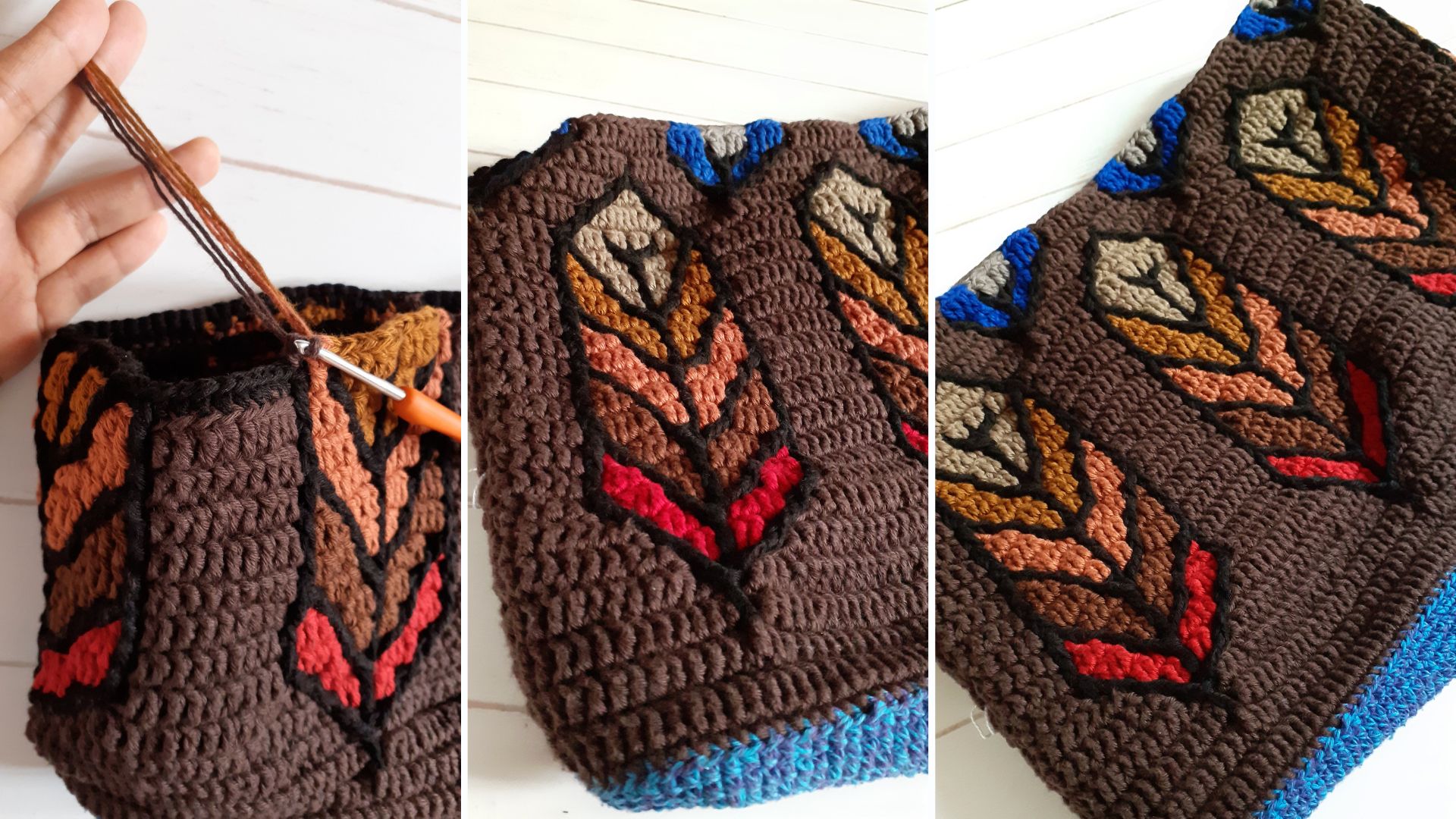
Esta funda está inspirado en el águila, por eso lleva plumas. Para combinar el color rojo utilicé una gama rojiza (colores cálidos terrunos). Y para el azul, utilicé colores fríos. También para que haga juego con la base azul.
This cover is inspired by the eagle, that's why it has feathers. To combine the red color I used a reddish range (warm earthy colors). And for the blue, I used cool colors. Also to match the blue base.
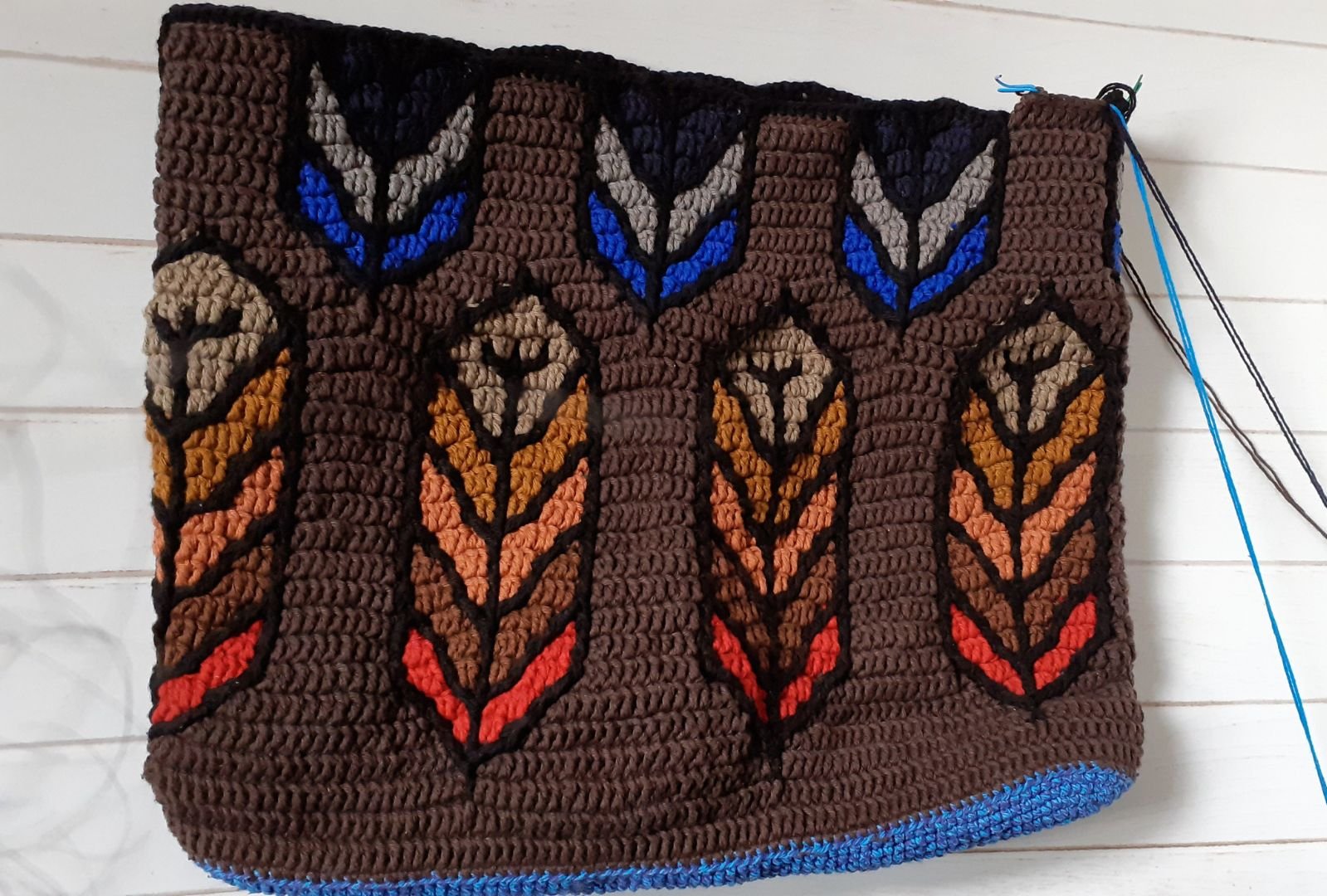
Aquí hay otro punto importante: "La cantidad de hilo a utilizar". Los intentos 1 y 2 fallaron mis cálculos de cantidad de color disponible. Es mas, este también falló (motivo por el cual lo dejé pendiente) y justo lo compré en la Fiesta tejeril. Lección aprehendida.
Here is another important point: ‘The amount of yarn to use’. Attempts 1 and 2 failed my calculations of the amount of color available. Moreover, this one also failed (which is why I left it pending) and I just bought it at the Knitting party. Lesson learned.
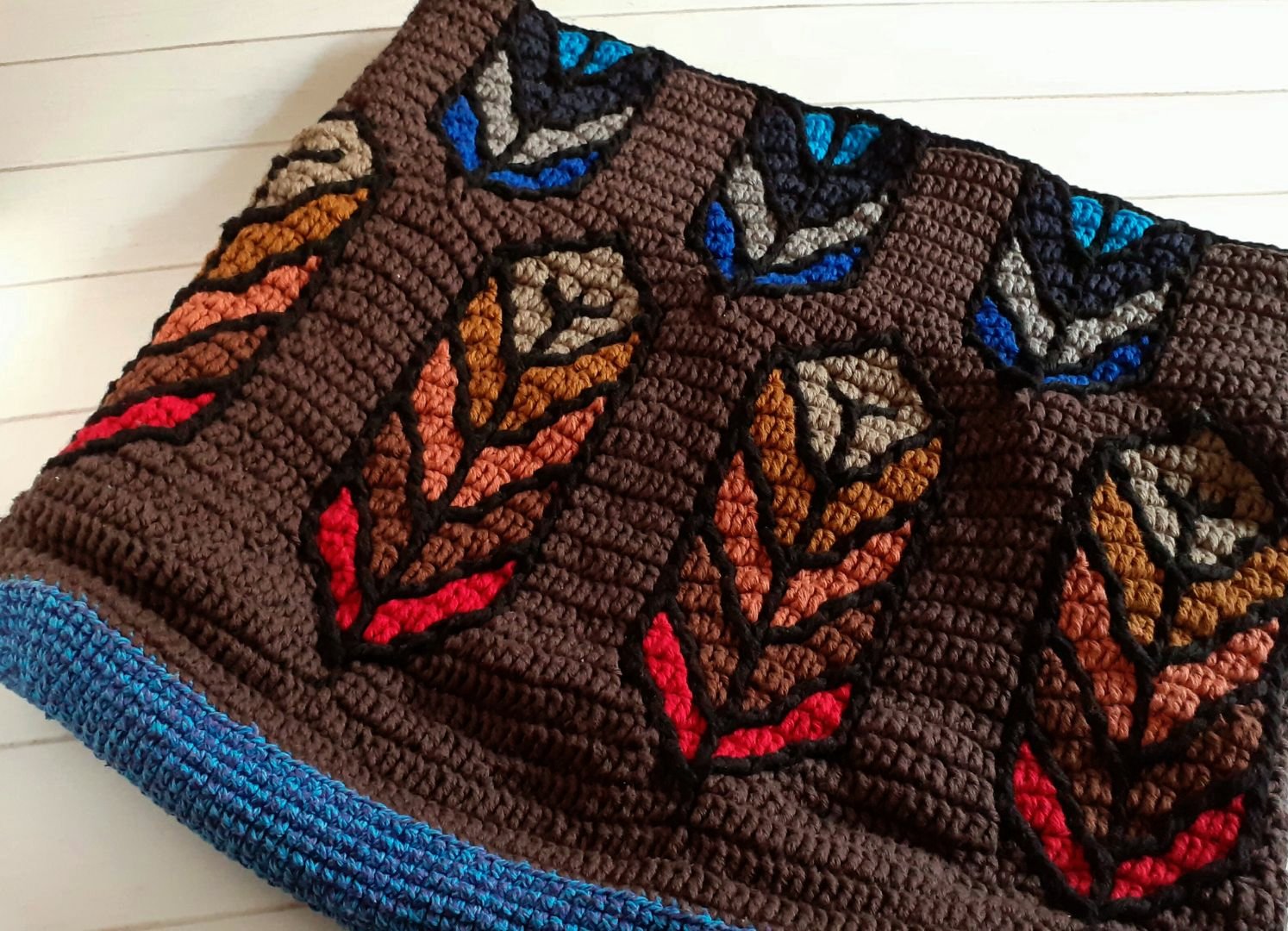
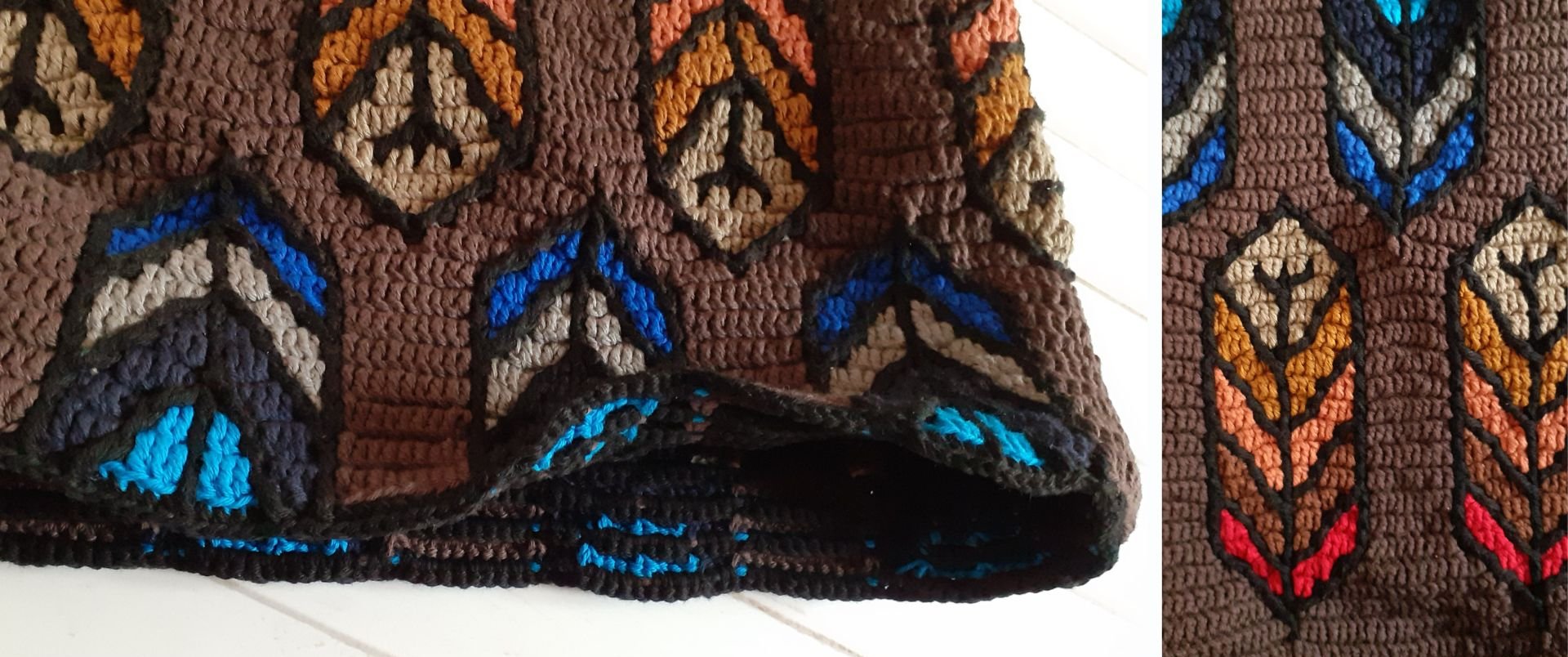
La parte tejida ya está lista ¡Misión cumplida!. Ahora vendrá el forro y el acolchado de la parte interna...ah, y el cierre. Al inicio sí me entretuve bastante en el cálculo de los números para el diseño, luego me acostumbré a tejer el patrón repetitivo y al final me relajé bastante tejiendo.
The woven part is ready... Mission accomplished! Now comes the lining and the quilting on the inside... and the zip. At the beginning I did spend a lot of time calculating the numbers for the design, then I got used to crocheting the repetitive pattern and in the end I relaxed a lot.
¡Y eso es todo!
¡Hasta la próxima!
See you next time!.
Dato curioso: Ya entiendo a quienes elaboran prendas tejidas, esa actividad les relaja y el resultado aún más. | I understand the knitters o crocheters, they find the activity relaxing and the result even more so.

Si quieres saber más, nos vemos en:
Youtube
Ravelry shop
Etsy shop
Tik Tok
Wow, I can't just believe my eyes that this is a crochet work, it look like a fabric, really beautiful, sorry for the failed ones, good work 👍👍
Hi. That's exactly what caught my attention when I learned about this technique. In the future I plan to apply it to different garments such as jackets, waistcoats, ponchos, slippers, boots, hats...for now these are just ideas, jaja. Best regars.
Wow... That so good of you, more knowledge to you dear
This is a very colourful and beautiful project, thanks for sharing.
Thank you very much. Primary colors are the basis for color palette combinations. I have been doing that since school.
This is amazing and so beautiful. I love the project and the perfect blend of colors.
Well done dear .
Thank you very much. When I only crochet I take the opportunity to combine colors and make the object more unique. Best regards.
Thank you very much!.
Hola @inici-arte, espero estés muy bien
Que bonito trabajo y lo minucioso de tener en cuenta las matemáticas para que todo cuadre perfecto. No conocía de esta técnica a nivel de nombre, me ha encantado. Que bello luce.
Una pregunta, por lo que observo todo es tejido en puntos altos ¿Cierto?
Saludos
Hola. Esta técnica fue creada el año pasado por Ana Celia. En la publicación de "la parte 2" explico más sobre los puntos...pero sí. Son como 2 tejidos (capas) en uno. La capa del exterior (de colores) son puntos altos y la capa interior son puntos bajos y puntos altos ligeramente distintos a lo tradicional (pa, pad, pat, dism pa, dism pad y dism pat). El uso de estos puntos dependerá del tipo de figura a tejer. Espero me deje entender. Abrazos.
Hola, gracias por ola explicación
¿En dónde puedo aprender esta técnica?
El año pasado Ana Celia abrió el curso. Varios le preguntaron cuándo volvería a abrir uno y ella dijo que aún no hay fecha. Sé que dictó talleres con motivos festivos (San Valentín). Mejor pregúntale. Yo asistí a una Masterclass libre que hizo y allí capté la técnica.
Muchas gracias por tu respuesta. Saludos
this is great to see this Feather design. It shows your efforts of hours.
Thank you very much!. Actually it was months, jaja.
Hiciste un maravilloso trabajo, es bastante laborioso tejer así y te salió genial y muy bonito de verdad ❤️😊
Y sí,el crochet relaja muchísimo...
Muchas gracias. Pronto exploraré con plumas en espiral (como volando). Uno de mis objetivos con esta técnica es plasmar figuras en movimiento, jaja. Antes no entendía por qué las prendas de vestir eran tan sueltas. Ahora estoy aprehendiendo que hay varios puntos en crochet y te ayudan a darle soltura o firmeza a lo que tejes, ya sea ropa, accesorios, etc. Abrazos.
Pues si, con el crochet se puede hacer muchas técnicas dependiendo del resultado que deseemos lograr.